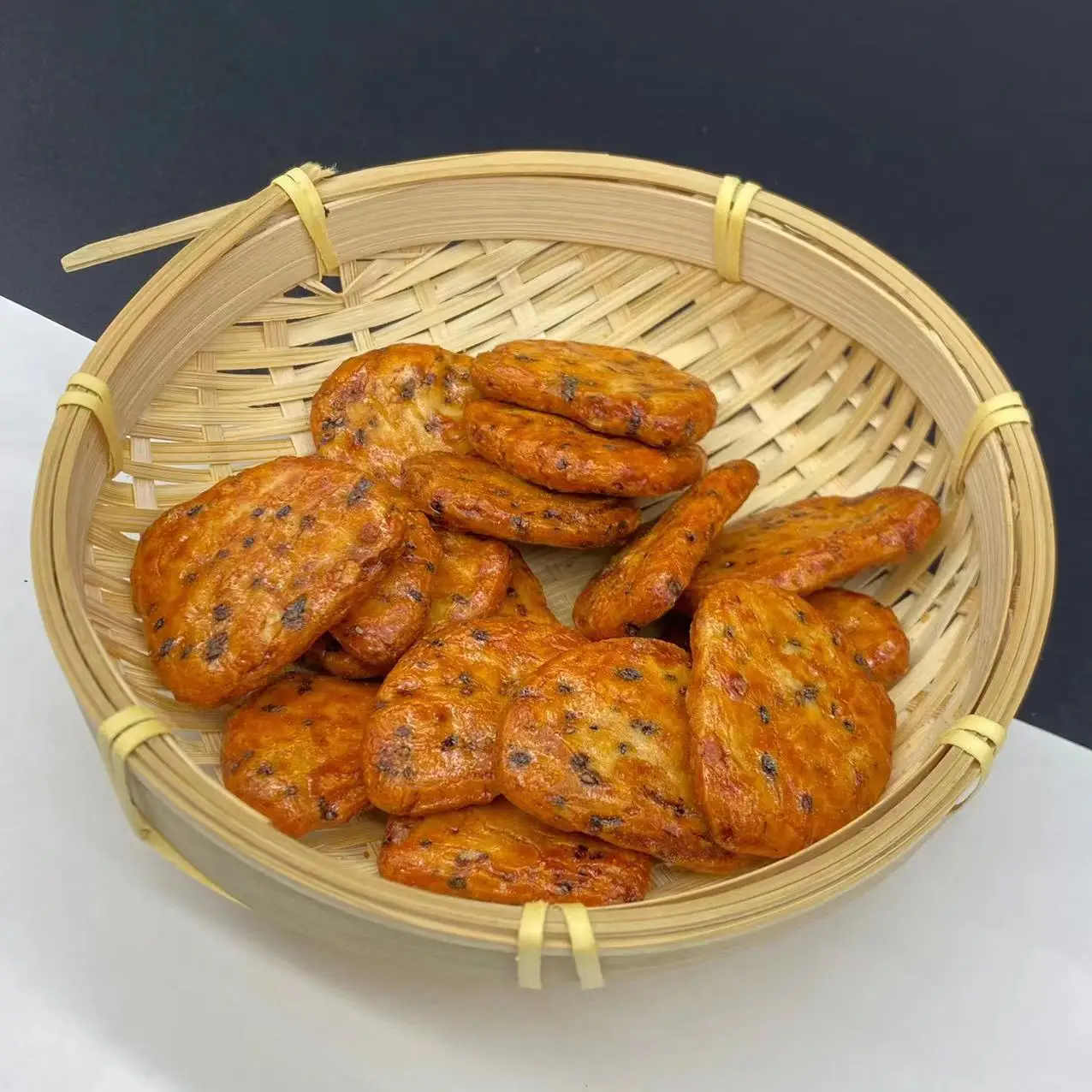Japanese rice crackers, deeply rooted in history, hold an important place in Japanese cuisine. Originating from the Tang dynasty, they have been integral to culinary traditions in Japan for centuries. These crackers are not only popular as everyday snacks but also as symbolic delicacies served with green tea or during special occasions. Their cultural significance is evident in the widespread availability across Japanese supermarkets and local stores, reflecting their cherished status in society.
There are numerous varieties of Japanese rice crackers, with Senbei and Okaki being two prominent types. Senbei, typically made from glutinous or regular rice, boasts a range of textures and flavors, from savory soy sauce to sweet sugar-coated versions. Meanwhile, Okaki, known for its large, flat shape, is often made from mochigome rice and offers a crispy, crunchy experience. Both types reflect regional variations, influencing their texture and flavor profiles, making them a staple icon in Japanese snack culture.
A comparison between classic and innovative Japanese rice cracker recipes reveals a fascinating blend of tradition and creativity. Classic recipes like Senbei maintain authenticity by using traditional flavors and methods, such as soy sauce and nori seaweed. On the other hand, contemporary twists incorporate new ingredients and flavors, adapting to modern tastes without losing their cultural essence. This harmonious blend showcases the rich diversity and enduring appeal of Japanese rice crackers across generations.
Senbei is a classic form of Japanese rice cracker, renowned for its simple yet flavorful ingredients such as rice and soy sauce. The preparation process begins with cooking glutinous rice until it is thoroughly soft, which is then flattened into thin layers. These layers are cut into various shapes and baked, toasted, or fried, leading to a crispy and golden texture. The addition of soy sauce during the cooking process infuses the crackers with a characteristic savory flavor that enhances the rice's umami profile.
To achieve the perfect senbei, follow a meticulous preparation process. Begin by soaking and cooking short-grain rice, which is then combined with glutinous rice flour in a food processor. The mixture is flattened between plastic sheets before being cut into desired shapes. Baking at a preheated temperature ensures the crackers achieve the optimal level of crispiness. Finally, a glaze of soy sauce and mirin is brushed on top and an additional baking round ensures a glossy, flavorful finish. This process highlights the delicate balance of texture and flavor that defines senbei.
Okaki, another traditional Japanese rice cracker, offers a unique texture and flavor distinct from senbei. Unlike the thin and often larger senbei, okaki features a denser and crunchier bite, typically made by toasting pressed blocks of rice. This method gives it a more robust texture, serving as a delightful contrast to the crispness of senbei. Okaki can be seasoned with a range of condiments, offering a variety of flavor profiles from savory soy sauce to sweeter alternatives, making it a versatile snack in Japanese cuisine with numerous variations to explore.
Contemporary Japanese rice crackers are experiencing a delightful transformation as chefs incorporate novel ingredients like matcha, spices, and superfoods into traditional recipes. These modern twists are not only expanding the flavor profiles but also appealing to health-conscious consumers. For instance, matcha-infused crackers offer a hint of earthiness and are rich in antioxidants, while superfood-infused varieties might include chia seeds or quinoa, adding a nutritional kick.
Unique flavor combinations are elevating the appeal of these crackers, creating an enticing balance between sweet and savory notes. Sweet versions include tantalizing flavors like caramel and fruit powders, whereas savory options are enhanced with wasabi and smoked flavors. These diverse tastes cater to various palates, making them a versatile snack choice that can satisfy different cravings.
Additionally, creative presentation and pairing play a significant role in enhancing the culinary experience of Japanese rice crackers. Innovative recipes allow for exciting pairings with beverages such as sake, green tea, or even wine, enriching both the flavor and the dining experience. By experimenting with the presentation, chefs can transform these traditional snacks into a centerpiece of modern Japanese cuisine, appealing to both locals and tourists eager to explore Japan's culinary innovations.
Japanese rice crackers, known as Senbei, are a beloved snack, appreciated for their diverse flavors and textures. Among the popular options are Wheat Round Rice Crackers and Glutinous Rice Cracker Cookies. These products capture the essence of traditional Japanese snacking, offering both convenience and taste.
One standout product is the Wheat Round Rice Cracker Glutinous Rice Cracker Cookies by Fujian Hanwei Foods Co., Ltd. These crackers are crafted using glutinous rice, soy sauce, and sesame seeds, creating a semi-soft texture with a savory taste profile. Ideal for both casual snacking and as a delightful accompaniment to beverages, these crackers are a flavorful introduction to Japanese culinary traditions.

To purchase authentic Japanese rice crackers like these, consumers can explore local specialty stores specializing in Asian goods or shop online through dedicated retailers offering a broad spectrum of Japanese snacks. Websites like Amazon or Asian grocers often carry these delicacies, ensuring access to quality and authenticity.
Creating Japanese rice crackers at home is both a rewarding and satisfying endeavor. To get started, you'll need some essential tools such as a rice cooker for cooking the rice, and a rolling pin for flattening the rice into thin layers. These tools are crucial in achieving the delicate texture that defines a perfect rice cracker.
Selecting the right ingredients is equally important. Opt for high-quality glutinous rice known for its sticky texture, which is ideal for making rice crackers. Additionally, choose authentic seasonings like soy sauce and mirin for a genuine taste experience.
Avoid common mistakes to ensure success. Overcooking the rice can result in dry crackers, while improper storage can lead to them losing their crispness. By ensuring the correct cooking times and storing them in airtight containers, you can preserve their delightful crunch.
 Hot News
Hot News